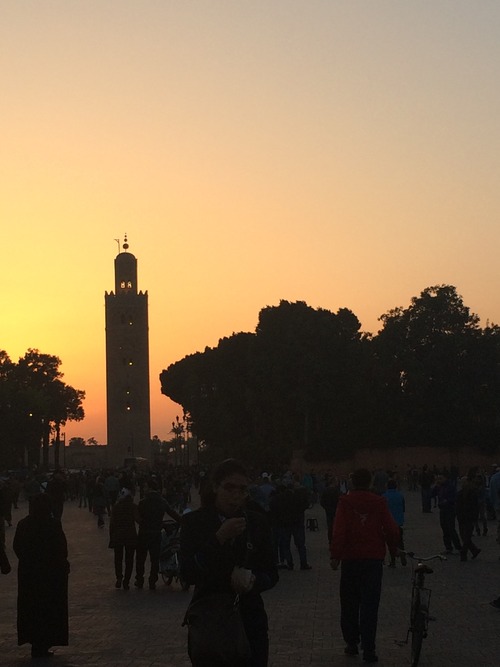This is a snip-it from my own study abroad blog, TheBackpack.TheBike.&TheBeer. I enjoyed sharing stories and updates of my travels with family and friends throughout my semester away from home. Here is a post that recaps my first week of classes at the University of Copenhagen (Københavns Universitet)!
Starting off my senior year of college in Copenhagen was a pretty cool feeling. Although I am missing out on my last fall semester at U of I, an exciting time of new students, new classes, and changing colors, I know I will return to Champaign soon enough! Shoutout to my NRES family Jamie, Luke, Carly, Mitchell, Brandon, Peter, & Haley – Leah & I are missing you!
September 1st was my first day of class and I was, of course, a bundle of nerves! I had no idea what to expect my class, teacher, and fellow students to be like. The Danish school structure is very different than in the States, but I have really come to enjoy it’s laid-back structure. The semester is split up into two nine-week blocks and in each block you can take one to two classes based on how many credits and what level they each are. I am only in one class right now called Urban Forestry and Urban Greening and it is the epitome of my dream course, despite the 9 hour structure on Wednesdays and Thursdays (it’s really not that bad!). I am in class Monday through Thursday, with Fridays off to complete group work.
The first week of class was packed with getting to know our classmates, introductory work, guest lectures, and lunch in the horticulture gardens. It is a Master’s course, so there is a mix of young and old students, but unlike my Danish Language course over the summer, the majority of my classmates are from Denmark! I am one of three non-europeans (including my teacher from Seattle and a girl from China), with the rest from Romania, Holland, Norway, Spain, Sweden, and Portugal to name a few!
Last week, we had two course excursions to learn about Copenhagen’s urban greening efforts. On Wednesday, we visited Bybi (“city bee”), an urban bee farm tucked away in a gated Amager community. Historically, the buildings within this community were facilitated by a women and children refugee hospital, homeless shelter, and rehab clinic for alcoholic and addicted homeless. The buildings have been renovated to serve the same purposes, since this area still has a large homeless population, but several community-uplifting projects have also started within it’s walls. Bybi’s honey production and manufacturing facility hire those in the area looking for a healthier way to occupy their time. The founder of Bybi has such a great message and focus towards bettering both the community’s members and natural environment. The project also has 17 rooftop hives scattered around the city where hotels and businesses invest, receive, and sell the on-site honey. As students, we received a factory tour, tasted half a dozen honeys, and even suited up to get a closer look at the hives! More about the honey – they collect, bottle, and sell honeys from 28 different locations in Copenhagen, each with their very own distinct color and flavor (due to the diversity of flowers visited by the bees!). Hmm…I wonder why my favorite was from Valby? #HomeSWEETHome
On Thursday, we visited ØsterGRO, a rooftop garden collective located in the Østerbro neighborhood (clever branding, huh?). It was hard to believe the project started only a year ago in August because the roof just flourished with fresh vegetables, herbs, and flowers! There was also a greenhouse, bee hives, and a fancy chicken coop. I’m telling you, those hens are living the Copenhagen high life! The project hopes to expand to other neighborhoods in the future as well as educate and inspire other green roof conversions. Urban farming is such an important practice that city-dwellers and businesses alike need to involve themselves in. It is the future of food production that we will all inevitably have to depend on, not to mention it is healthier for ourselves and the environment! 🙂
Needless to say, I am in LOVE with this course. Don’t get me wrong, I love my major and have learned so much from my classes at the University of Illinois, but there is something different about this one. I get giddy going to class each day to learn about a field I have truly found as a passion. Managing and establishing green spaces of our world’s cities have a tremendous effect on society and the natural environment and is something I am inspired to get involved in in the future. As I prepare to start the third week of class, I am looking forward to another excursion to Naturpark Amager, the site of our group project work! Stay tuned on that…
The five and a half months that I spent living and studying in the 2014 European Green Capitol were incredible, but I am very excited to be back on the U of I campus for my final semester as an undergraduate!
Cheers,
Molly Roche
NRES






